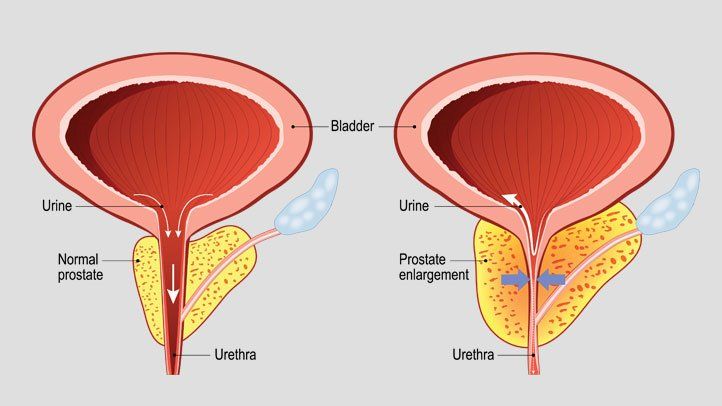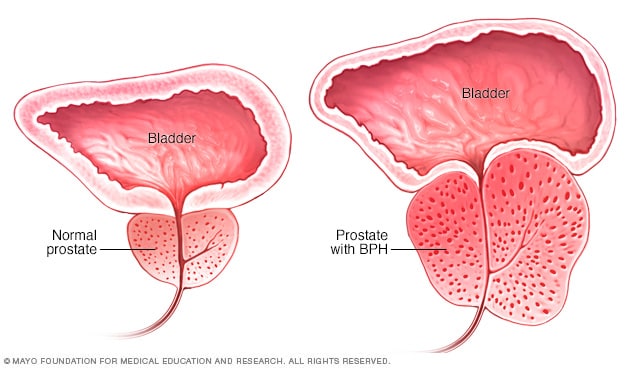
A benign prostatic hyperplasia overview will answer some of your most common questions about BPH. What exactly is BPH, and how can it be diagnosed? What is the treatment process? Your doctor can help you understand all of the treatment options available for this condition, including medications, cystoscopy, and surgery. This article will explain the diagnosis and treatment of BPH. Continue reading for information on each of these options.
Symptoms, treatments, and treatments for BPH are outlined in the symptom report. The doctor can get a more detailed picture of the condition from the drug report. These reports include detailed descriptions of the drug’s mechanism of action, clinical trials, and NDA approval. They also discuss product technology, licensing, mergers and acquisitions, and funding sources. If you suspect that you may have symptoms of BPH, a thorough review of BPH will help you choose the best treatment.
BPH is not a fatal disease. It may not be immediately noticeable, but you may have symptoms that point to the condition. An enlarged prostate can block the urethra and cause kidney damage. Symptoms of BPH include pain in the lower abdomen, difficulty urinating, or discomfort in the genital area. A digital rectal examination (DRE) can also detect hard areas on a urological scan.
An enlarged prostate can obstruct the flow of urine, resulting in urethral obstruction. This can lead to urinary incontinence, bladder stones, or even kidney failure. In severe cases, the patient cannot urinate at all. In such cases, immediate catheterization may be required. In extreme cases, surgery is recommended. However, in most cases, treatment is determined by whether the patient can urinate or not.
The diagnosis of BPH can be made with a physical examination. Symptoms may include pain in the lower abdomen or in the genitals. A digital rectal examination may reveal hard areas of the prostate. If the enlarged prostate is accompanied by pain, the doctor may prescribe hormonal treatment or surgery to relieve the symptoms. A biopsy will also be needed to determine the exact cause of BPH.
The diagnosis of BPH should not be based on the patient’s age. In men, BPH is usually diagnosed at a younger age. Early diagnosis can help prevent disease progression. If a man experiences pain in the lower abdomen, he should immediately consult a doctor. The physician should be able to explain the risks and benefits of treatment options. Symptoms of BPH can be treated with a PSA test.

The diagnosis of BPH should include a comprehensive review of the patient’s symptoms and causes of BPH. The diagnosis of BPH should also include a detailed list of symptoms, which can help the physician in choosing the right treatment for their patients. Researchers are constantly exploring treatment options for BPH to find the most effective approach. Getting more information on the site https://www.culturademocratica.org/
about the treatment of BPH is an important step in making an informed decision. An informed patient will be able to make informed decisions about their health.
The diagnosis of BPH should be made by a physician familiar with BPH. An enlarged prostate does not increase the risk of prostate cancer, but it may limit a man’s ability to urinate. Also, it can affect the urethra, which is the tube that leads to the penis. The urethra is a vital organ that carries urine from the bladder to the penis.
The BPH symptom index is used to determine the cause of BPH. It includes various criteria, including age, gender, and frequency of urination. Among them, men with BPH should have an enlarged prostate. The symptoms of BPH can affect the size of the urethra. Therefore, the symptoms of BPH are typical for older men. The condition of some of these men needs to be assessed.
The authors of this study suggest that patients with BPH should consult with a physician experienced in treating the condition. In addition to surgery, the site sagreinbasilicata.com
describes several alternative treatments for BPH. Surgical procedures are the preferred treatment for large prostates. This treatment option may be best for people who are undergoing radiation therapy. The procedure is a viable option for men with BPH. This is a procedure that is performed when the prostate is enlarged by more than 50%.